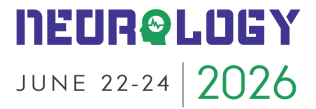Dementia with Lewy bodies (DLB)
Dementia with Lewy bodies (DLB) is a progressive form of dementia that is caused by abnormal deposits of a protein known as alpha-synuclein in the brain. The symptoms of DLB may occur before other signs of cognitive decline, such as difficulty with recall, concentration, and executive functioning. It is the second most common cause of dementia after Alzheimer’s disease, accounting for approximately 10-25% of all dementia cases. Common clinical features of DLB include cognitive decline, visual hallucinations, parkinsonism, and autonomic dysfunction. Other non-cognitive features have also been described, such as depression, anxiety, apathy, and weight loss. Patients often have difficulty managing complex tasks and may experience fluctuations in cognitive abilities, with marked improvements in alertness and cognition during the day and marked deterioration in the evening. Brains affected by DLB show the presence of abnormal deposits of alpha-synuclein protein, known as Lewy bodies. This protein is believed to interfere with the functioning of nerve cells, leading to the disruption of nerve cell networks in the brain. Progress of DLB is usually slow, but it can be aggressive in some cases. Clicking noises, a sign of abnormalities in the autonomic nervous system, are commonly heard in advanced stages. There is no specific test for diagnosing DLB, but clinicians usually use a combination of diagnostic procedures to reach a diagnosis. These include medical history, cognitive, neurological, and psychiatric assessments, as well as laboratory tests. Brain imaging techniques such as MRI and PET scans can help to detect the presence of Lewy bodies in the brain. Treatment for DLB includes medications to address the symptoms and management of associated medical issues. Cholinesterase inhibitors and memantine are commonly prescribed to address cognitive symptoms. However, these medications may be associated with adverse effects. Non-pharmacological therapies, such as early detection and management of medical conditions, may also be beneficial in slowing the progression of the disease. Although there is currently no cure for DLB, researchers are actively trying to find novel treatments to slow its progression and improve the quality of life of those affected. Increasing awareness of the disease is important to improve early detection and access to treatment. In conclusion, dementia with Lewy bodies can cause significant disability and has no known cure. Early diagnosis and treatment of DLB is important, and more research is needed to better understand the disease and develop effective treatments.

Ken Ware
NeuroPhysics Therapy Institute, Australia
Robert B Slocum
University of Kentucky HealthCare, United States
Yong Xiao Wang
Albany Medical College, United States
W S El Masri
Keele University, United Kingdom
Jaqueline Tuppen
COGS Club, United Kingdom
Milton Cesar Rodrigues Medeiros
Hospital Santa Casa de Arapongas, Brazil




Title : Perception and individuality in patient cases identifying the ongoing evolution of Myalgic Encephalomyelitis/Chronic Fatigue Syndrome (ME/CFS)
Ken Ware, NeuroPhysics Therapy Institute, Australia
Title : Narrative medicine: A communication therapy for the communication disorder of Functional Seizures (FS) [also known as Psychogenic Non-Epileptic Seizures (PNES)]
Robert B Slocum, University of Kentucky HealthCare, United States
Title : Personalized and Precision Medicine (PPM), as a unique healthcare model through biodesign-driven biotech and biopharma, translational applications, and neurology-related biomarketing to secure human healthcare and biosafety
Sergey Victorovich Suchkov, N.D. Zelinskii Institute for Organic Chemistry of the Russian Academy of Sciences, Russian Federation
Title : Neuro sensorium
Luiz Moutinho, University of Suffolk, United Kingdom
Title : Traumatic Spinal Cord Injuries (tSCI) - Are the radiologically based “advances” in the management of the injured spine evidence-based?
W S El Masri, Keele University, United Kingdom
Title : Scalp acupuncture with functional electrical stimulation for the treatment children with autism spectrum disorder
Zhenhuan Liu, Guangzhou University of Chinese Medicine, China